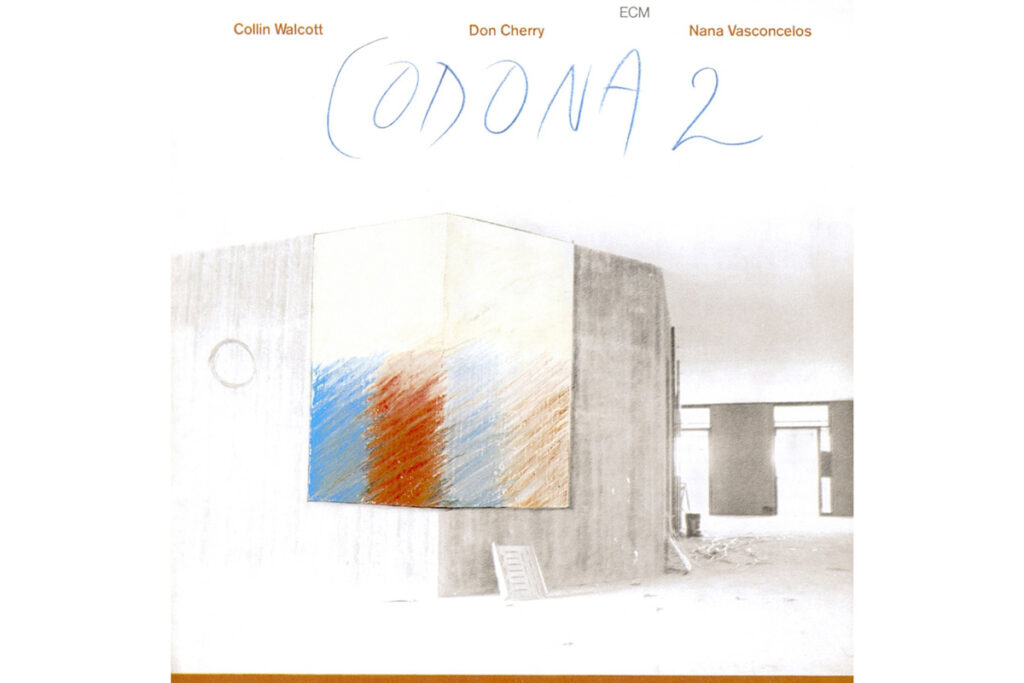This trio was the “all-star band” of early world jazz.
Even the band name sounded globally multicultural, even though it’s simply derived from the first names of the three musicians: Collin, Don, Nana. It was the American Collin Walcott who brought Codona to life. And with his untimely death, this band became a legend.
Collin Walcott (1945-1984) was a founding member of the equally cosmopolitan band Oregon. He had discovered his love of Indian music at an early age, studying the sitar with Ravi Shankar and the tabla with Alla Rakha. Don Cherry (1936-1995) was the first trumpeter of free jazz, Ornette Coleman’s right-hand man. As early as the 1960s, however, he had opened up the liberated jazz to global modes and rhythms and developed a soft spot for ethnic instruments. Nana Vasconcelos (1944-2016) brought the percussion colors of Brazil into contemporary jazz and used them to spice up the music of Egberto Gismonti and Milton Nascimento.
When these three musicians met in the recording studio in Ludwigsburg, their many sound generators formed an unparalleled sonic arsenal. In addition to the three main instruments sitar, trumpet and berimbau, the Codona records (1978-1982) also feature tabla, sanza, timpani, melodica, doussn’gouni, talking drum, dulcimer, flutes, cuica, organ, kazoo, other percussion and the musicians’ voices. In Codona’s work, the rhythms, sounds and scales of different continents mingled and became the basis for grandiose improvisations. They also created imaginative soundscapes between rainforest impressions and relaxed free jazz. Codona’s pan-cultural world music always comes across as tangible, human and approachable, in a word: natural. It was as if the three musicians’ instruments had been waiting to communicate with each other across cultural and continental borders. “We just sit there and watch,” Walcott once said ironically.
The album Codona 2 begins with “Que Faser” – here, sitar, trumpet and Vasconcelos’ voice improvise simultaneously, and the rhythmic-sounding background pulsates multiculturally in a 7-note meter. Walcott then translates an African traditional into the visionary sound of several sitars (“Godumaduma”). The penultimate piece, identified as “Walking On Eggs” by Collin Walcott, sounds like an early, unknown Ornette Coleman, upbeat and wanton. Sitar and trumpet form an exquisite “horn section” here. No one has played the Indian instrument in jazz as confidently as Walcott.
The longest piece on the album is “Malinye”, a wonderfully melancholy melody by Don Cherry. At first, he himself can be heard on melodica, trumpet and voice, supported by sitar, timpani and cymbals. The middle section is an exotic, psychedelic sound drama – with just the voices and various percussion instruments. And then the trio’s most charming “signature sound” comes together: a grooving combination of sanza (African thumb piano), doussn’gouni (African hunter’s harp) and berimbau (Brazilian musical bow). On the debut album, the combination of these three sound generators was already presented in the piece “Mumakata”. The back of the LP cover of Codona 2 shows the three musicians playing these instruments.
Find Codona 2 on discogs here.


